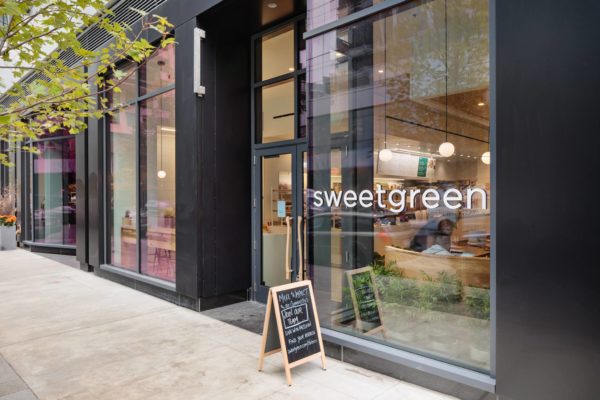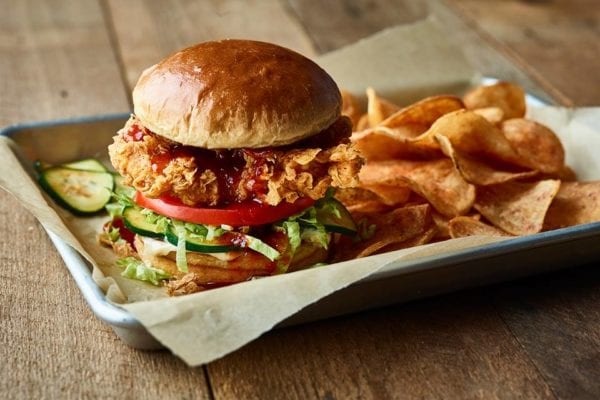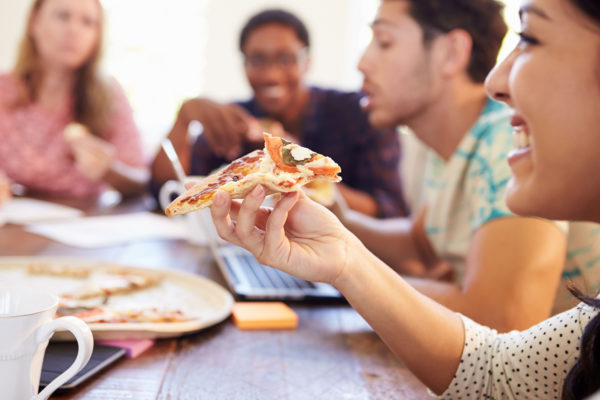Skift Take
Array
— Kristen Hawley
(Bloomberg) — Fresh ingredients, no tipping and sleek design made fast-casual restaurants a darling of the millennial customers every business strives to attract.
The hot streak is over. The category’s once-enviable growth looks like it’s hit a plateau. This year, U.S. fast-casual sales growth will slow to between 6 percent and 7 percent from about 8 percent in 2016, according to industry consultant Pentallect Inc. In each of the prior five years, sales had grown between 10 percent and 11 percent.
“The segment has become saturated and has some issues,” said Bob Goldin, a Chicago-based Pentallect partner. “There are signs of maturity.”
There’s turmoil throughout the industry. Noodles & Co. and Pie Five, which sells personalized pizzas, are closing locations. Red Robin Gourmet Burgers Inc. abandoned its fast-casual Burger Works venture, shuttering outlets and re-branding others. Mexican-food seller Qdoba is delaying new openings amid falling sales. Sandwich maker Potbelly Corp. said it expects negative sales for the year as its largest-volume restaurant closes. And Zoe’s Kitchen Inc. has posted slower growth lately.
Back in the ’90s
The fast-casual genre got rolling in the 1990s, with Boston Market, Fazoli’s and Einstein Bros. luring diners with convenient and affordable meals that were a step above fast food. More chains popped up, many of them went public, and stock prices skyrocketed. But better-quality fast food for less money, companies that push cook-it-yourself meal kits and the homelike comfort of mom-and-pop restaurants are taking a bite out of sales.
“There’s some pretty strong pressure against the fast casuals,” said Jean Birch, chief executive officer of take-and-bake pizza chain Papa Murphy’s Holdings Inc. Birch, who previously led IHOP, said McDonald’s and Wendy’s are doing a better job on quality — and have lower prices.
Fast-casual restaurant stocks lost 14 percent last year, according to the Bloomberg Fast-Casual Restaurants Index, compared with a 0.9 percent gain for the S&P 500 Restaurants Index.
Americans are increasingly looking for the convenience of delivered food, as well as cheaper prices, especially after a bout of deflation made buying groceries less expensive. Fast-casual meals usually carry a minimum $10 price tag, and the companies have largely lagged in delivery and mobile ordering. Big pizza chains have offered mobile-ordering technology for years.
“The dollar is going to a lot of different places,” Goldin said.
Brook Hubbard, 41, is one of those looking for a cheaper meal. He’s eating more at fast-food joints like Chick-fil-A and Taco Bell, where he can fill up on the $5 or $6 box special instead of shelling out $10 at Chipotle or Noodles. Hubbard, who lives in Columbia, Maryland, says he frequents Taco Bell two or three times a week.
Hubbard, whose children are 5 and 2, said fast food is speedier than fast casual, and easier for parents.
Fast-casual eateries may be “great for some of the younger people with no kids and a little bit more money. But not for us who are on the go all the time,” he said. “I really don’t have the time to pull over, park, sit down, eat.”
Calorie Count
Diners also may be realizing that fast casual doesn’t necessarily mean fewer calories. Panera Bread Co.’s Italian hoagie has 880 calories and more than double the salt of a McDonald’s Big Mac, which checks in at 540 calories. A turkey fresco sub at Potbelly has 720 calories, and a chicken burrito from Chipotle can pack more than 1,000.
It hasn’t helped that Chipotle has been struggling to draw customers after sickening hundreds in a string of food-borne illness outbreaks in 2015. To focus on boosting its core brand, the company last year said it was offloading its ShopHouse fast-casual-style chain. Now it’s focused on a new burger eatery, Tasty Made, that so far has just one location, in Lancaster, Ohio.
Not all fast casual has fallen on hard times. Those that have embraced technology, convenience and healthier meals are still doing well. Panera Bread’s performance attracted a takeover bid from JAB Holding Co. this year. Its loyalty program boasts 25 million members, and delivery is now offered in many of its restaurants.
Still, there’s plenty of bad news. Last month, Jack in the Box Inc. said it hired Morgan Stanley to look at alternatives for its Qdoba fast-casual chain, which posted a 3.2 percent drop in same-store sales in the most recent quarter. Qdoba is dragging down the valuation of the Jack in the Box brand, CEO Lenny Comma said.
‘Huge Potential’
Pie Five, owned by Texas-based Rave Restaurant Group Inc., also is losing in the battle for customers. In May, the company announced a net loss as Pie Five same-store sales plummeted 16 percent in the latest quarter. It also lost 13 locations in the three months ended March 26. In 2015, then-CEO Randy Gier predicted 500 Pie Five locations by 2020. It had 86 as of the end of its latest quarter.
Others have made similar promises. In 2013, then-Noodles CEO Kevin Reddy told Bloomberg that the chain had “huge potential” in the U.S. Potbelly stock, meanwhile, is down about 17 percent since it went public in 2013. Sales trailed estimates in its most recent quarter and the company said it’s closing its highest-volume location last month.
“A lot of these names came out with very big promises,” said Nick Setyan, an analyst with Wedbush Securities Inc. “Ultimately, there’s only so much of the pie to go around.”
©2017 Bloomberg L.P.
This article was written by Leslie Patton from Bloomberg and was legally licensed through the NewsCred publisher network. Please direct all licensing questions to [email protected].
![]()



